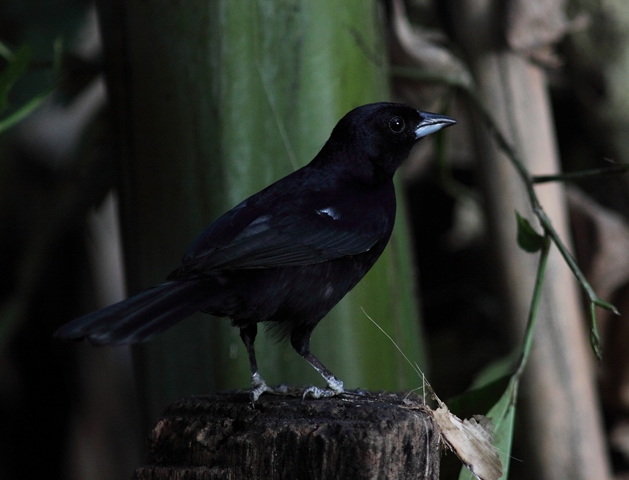At best, a sporadic visitor to the garden, the White-lined Tanager (Tachyphonus rufus) is evidently nesting here this year somewhere close to the fallen higuerón at the bottom of the lot. The female often appears to be much brighter in hue, almost cinnamon or rufous, than in Karel Straatman’s photo above, but she makes it easier to identify her all-black mate since they seem to be inseparable throughout the year. The bird’s Latin name seems to refer to the female, while its English name points directly at the white in the wing of the male, barely visible until he flies.
When Stiles & Skutch published their wonderful A Guide to the Birds of Costa Rica in 1989 no nest of this species in Costa Rica had been described. I am assuming that this situation has now changed, but I’m hoping to find the exact location of the nest in my garden, just in case it hasn’t been photographed here before. As regards identification, the male White-shouldered Tanager (similar range) has a white shoulder patch that is conspicuous enough to preclude confusion. I have found this species at nearby San Rafael, but never yet here at home. Here in San Antonio, I can count on three tanager species every day: Passerini’s Tanager, Blue-gray Tanager, and Palm Tanager. Visitor to Costa Rica ooh and aah over the Passerini’s brilliant scarlet rump against velvety black, while the Blue-gray normally gets an “oh, how pretty” comment. The sober plumage of the Palm Tanager generally fails to attract attention, but a close look shows that it has quite beautiful tinges of olive-green, mostly on the head. The Golden-hooded Tanager, with its golden head on a blue and black body, never fails to cause squeals of delight, but, although it is a quite common bird, I can never be sure that it will appear.



